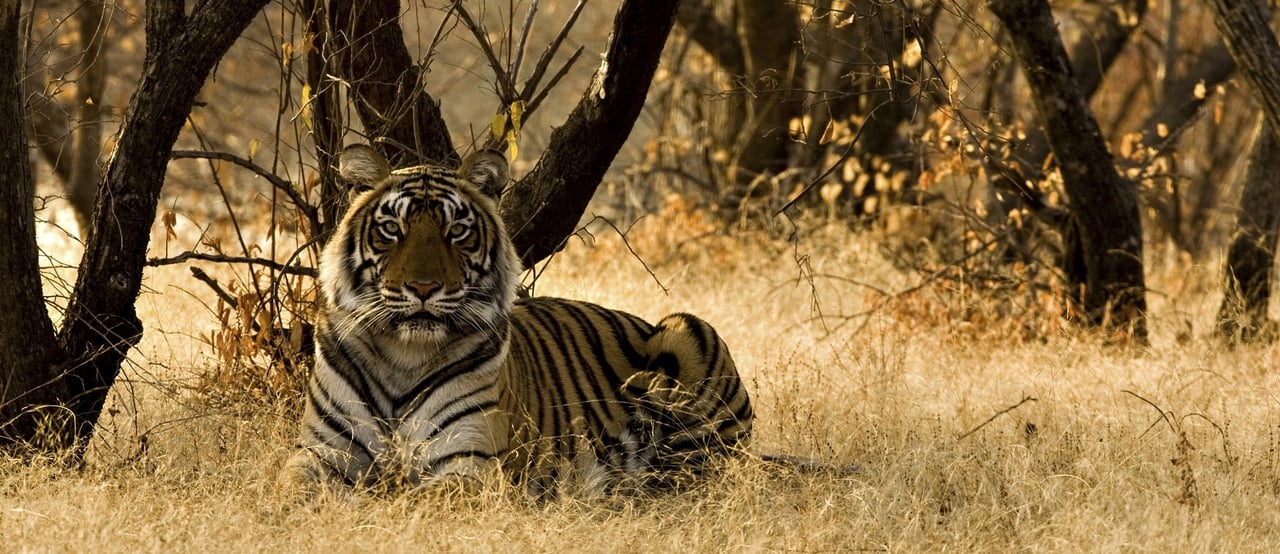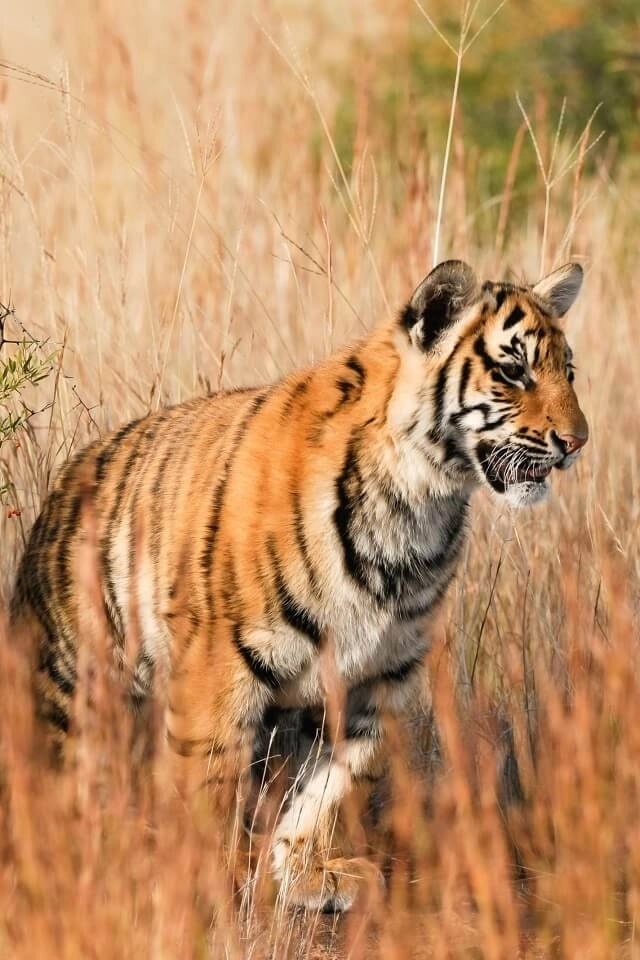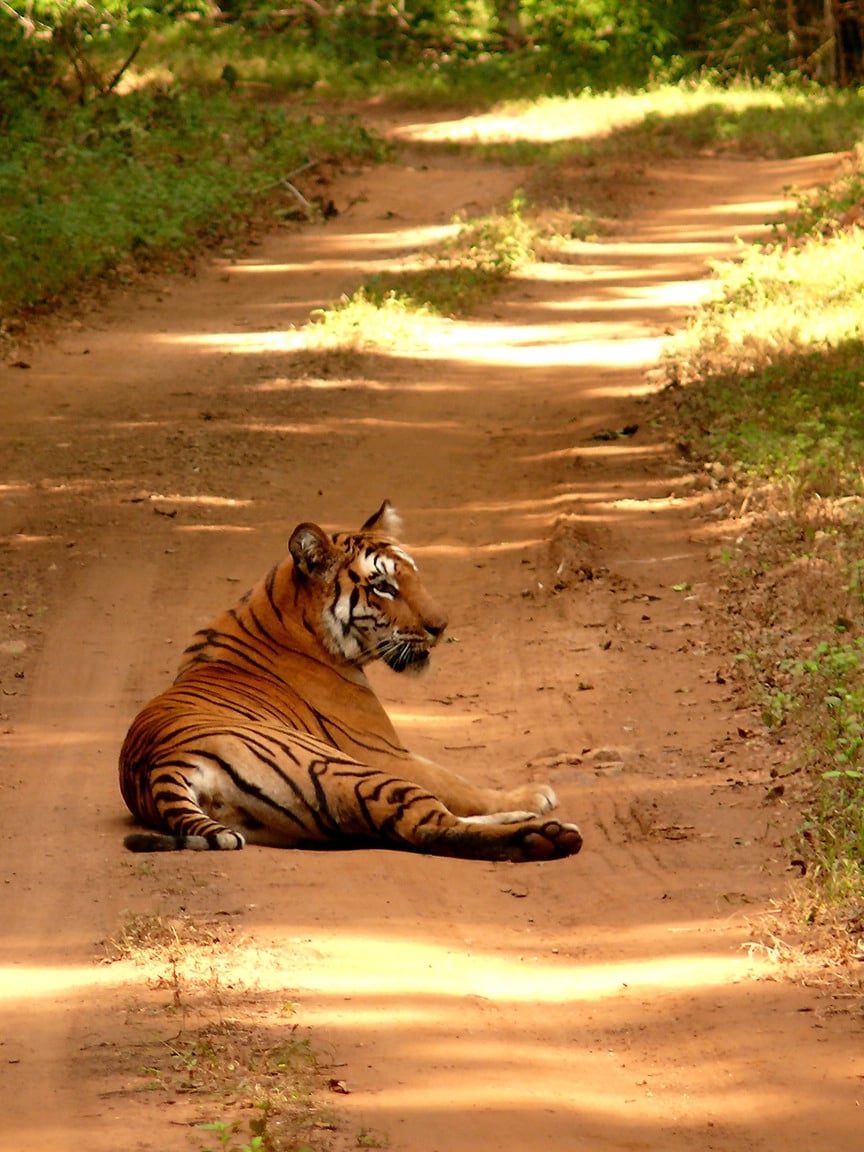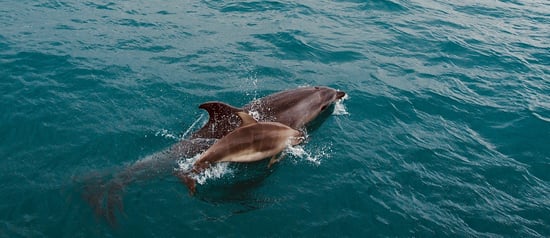Donate to protect tigers
You can help end the exploitation of tigers for entertainment and traditional medicine.

When we say big cats, we mean it. Tigers are the largest member of the cat family.
These larger-than-life animals are mostly solitary aside from the relationship between a mother and her cubs. An individual will keep a large territory to itself, covering between 8km to 95km.
In the wild, cubs will spend up to two years with their mother growing strong and learning from her. Some tendencies are instinctive but much of this time is vital training for the cubs – like learning how to hunt. This is an important developmental period where cubs learn key life skills and natural behaviours.
The study of tigers is somewhat contested. Depending on the source there are either two subspecies, the Sunda and the Continental Tiger, or six remaining subspecies of tiger including the Indo-Chinese, Bengal, Amur (Siberian), Sumatran, South China and Malayan tiger.
Despite the academic disagreement, everyone agrees the biggest of the bunch is the Siberian Tiger, weighing in at around 300kg with the largest ever recorded being a massive 384kg animal.
The average house cat has a reputation for disliking water, but it couldn’t be further from the truth for a tiger, they love to swim! And it’s a great way for those in warmer climates such as east Asia to cool off.

These endangered cats face unrelenting pressure on all sides, from the exotic animal trade, irresponsible tourism, farming for traditional medicine, poaching, and climate change. As a result, only about 5,574 tigers still live in the wild.
Tigers farmed in China for traditional medicine are restricted to a cage that only measures about 4x7 metres on average. These tigers are either unnaturally bred in sterile facilities or poached from the wild at a young age. These tigers will all share the same sad fate, suffering followed by death. They are cruelly farmed for the production of traditional medicine products, including tiger bone wine and tiger bone ointment.
Irresponsible tourism puts captive tigers under a great deal of stress. Big cats are the victims of the rise of social media’s demand for exotic animal selfies. The baby tigers in these photos undergo relentless handling. As they get older, they are subjected to harsh training to prepare them for performances that force them to enact distressing unnatural behaviours. This industry poaches animals from the wild and treats them as mere props in a media feed or stage show.
The breeding of tigers in captivity for profit serves no purpose in conservation. It only lines the pockets of tiger farmers, exotic animal traders, and the wildlife entertainment industry. Cubs are ripped away from their mothers at birth to face a life of abuse for entertainment or are killed for traditional medicine products. The practice encourages the mistreatment of these animals in captivity and the poaching of wild tigers.


World Animal Protection is seeking to put a stop to the suffering of tigers. It is our responsibility to continue to apply pressure to government bodies and travel companies to put an end to their mistreatment and trade.
Popular online travel company TripAdvisor stopped promoting and selling tickets to barbaric tiger entertainment venues thanks to thousands of supporters joining together for wildlife. We continue to advocate for travel companies to cease this practice and start educating their customers on how to respect wildlife while on holiday.
Our Wildlife Selfie Code, a campaign seeking to educate the public on the suffering of animals in wildlife selfies. This campaign garnered over 250,000 sign-ups and resulted in Instagram launching a ‘content advisory page’ on taking photos with wildlife.
Regarding captive breeding and the use of tiger products in the Traditional medicine industry, we have completed a full report: Trading Cruelty. This report uncovers the big cat trade responsible for abusing tigers on an everyday basis. It includes not only our investigation and evidence but also ways we can address this problem.

You can help end the exploitation of these animals by donating today. No matter how big or small your donation is, you are joining the cause.
Your support helps us lobby governments and educate tourists. Click below to donate today.
You can help end the exploitation of tigers for entertainment and traditional medicine.
Don’t be part of this ugly picture. Sign our Wildlife Selfie Code now, and help filter cruelty out of selfies.
Read our 'Trading Cruelty' report and learn how captive big cat farming fuels the traditional medicine industry.
Sign petitions and pledges to protect animals around the world.

Join thousands of animal lovers fighting to protect wildlife and give farmed animals good lives. Sign up now to receive emails with all the ways you can help.
Sign up